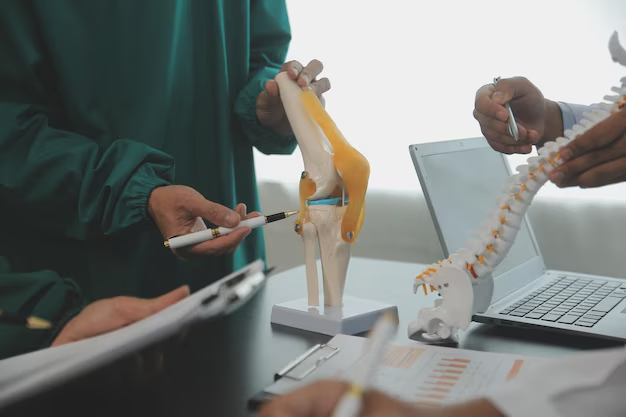Understanding the Root Causes of Osteoporosis
Osteoporosis is often dubbed the "silent disease," as it quietly erodes bone density, leading many to wonder, what causes this stealthy condition? While age is a key player, it's far from the only factor. Let's delve into the complex web of reasons behind osteoporosis and explore pathways to empowerment through available financial and educational resources.
The Underlying Factors of Osteoporosis
**1. Aging: The Natural Progression
As we grow older, our bones inevitably become weaker. Bone density peaks in our 20s and slowly decreases thereafter. This gradual shift is why osteoporosis is often associated with aging.
**2. Hormonal Changes: A Delicate Balance
Women, particularly post-menopausal, are at higher risk due to decreased estrogen levels, which play a crucial role in maintaining bone density. Men, too, are affected by a decline in testosterone as they age.
**3. Dietary Deficiencies: Starving the Bones
Calcium and vitamin D are vital for bone health. A lack of these nutrients impedes the body’s ability to renew bone tissue effectively. Coupled with low protein intake, this deficiency can accelerate bone loss.
**4. Lifestyle Choices: The Avoidables
Sedentary lifestyle, excessive alcohol consumption, and smoking are contributors to weaker bones. Regular physical activity and maintaining a healthy lifestyle act as protective factors.
**5. Medical Conditions and Medications: Indirect Influences
Certain medical conditions, like rheumatoid arthritis or hyperthyroidism, and long-term use of medications, such as corticosteroids, can compromise bone integrity.
Navigating Financial and Educational Resources
Understanding the triggers of osteoporosis is just the beginning. Addressing financial constraints related to this condition can significantly impact one's capacity to manage their health. Here's how you can leverage resources to gain control:
Government Programs and Financial Aid
- Medicare and Medicaid offer coverage for certain osteoporosis-related treatments and tests.
- For those in need, Supplemental Security Income (SSI) might provide financial assistance.
Debt Relief and Credit Solutions
Managing healthcare costs can be daunting. Consider exploring debt management programs tailored for medical expenses. They can help negotiate lower payments and provide structured repayment plans.
Educational Opportunities
Educational institutions and non-profits sometimes offer workshops and courses on managing osteoporosis through lifestyle changes. Access to such knowledge can empower you with strategies for maintaining bone health.
Community Support and Grants
- Join support groups for shared learning and community bonding.
- Look for grants aimed at research, education, and creating awareness about osteoporosis, which could also come with scholarship opportunities for related health education fields.
Resource Table for Empowerment and Support
| 💰 Financial Assistance | 📚 Educational Resources | 🛠️ Debt Relief Options |
|---|---|---|
| Medicare & Medicaid Benefits | Online Health Workshops | Medical Debt Management |
| SSI for Low Income | Community Health Seminars | Credit Counseling |
| Healthcare Grants | Nutrition and Exercise Classes | Negotiated Payment Plans |
Understanding osteoporosis begins with recognizing its causes but empowering oneself lies in leveraging the available financial and educational resources that support holistic health. Taking charge of these aspects not only aids in managing osteoporosis but also propels you towards a healthier, more informed life.

Related Topics
- a Nurse Is Caring For a Client Who Has Osteoporosis.
- a Percutaneous Is Performed To Treat Osteoporosis Related Compression Fractures
- Can Alcohol Cause Osteoporosis
- Can I Do Pilates If I Have Osteoporosis
- Can I Reverse Osteoporosis
- Can Men Get Osteoporosis
- Can Osteoporosis Affect Teeth
- Can Osteoporosis Be Cured
- Can Osteoporosis Be Painful
- Can Osteoporosis Be Reversed